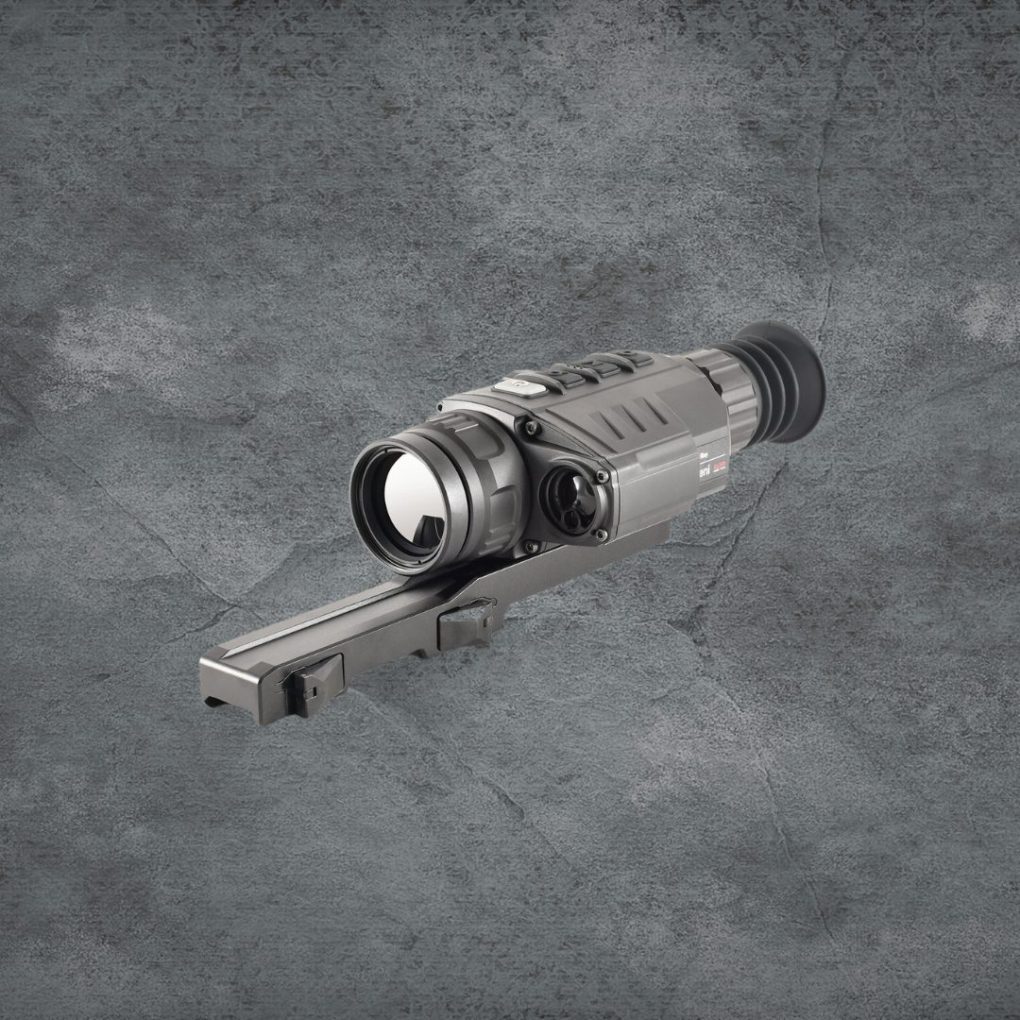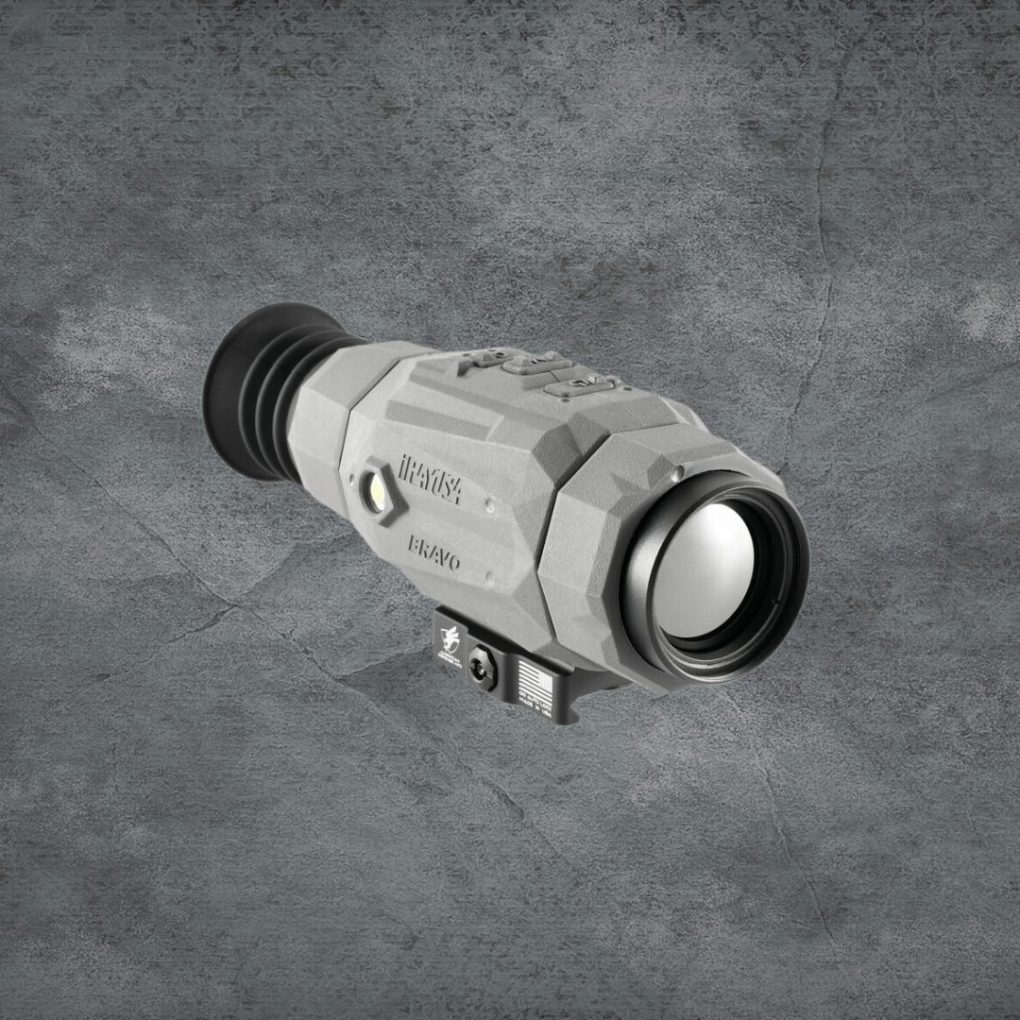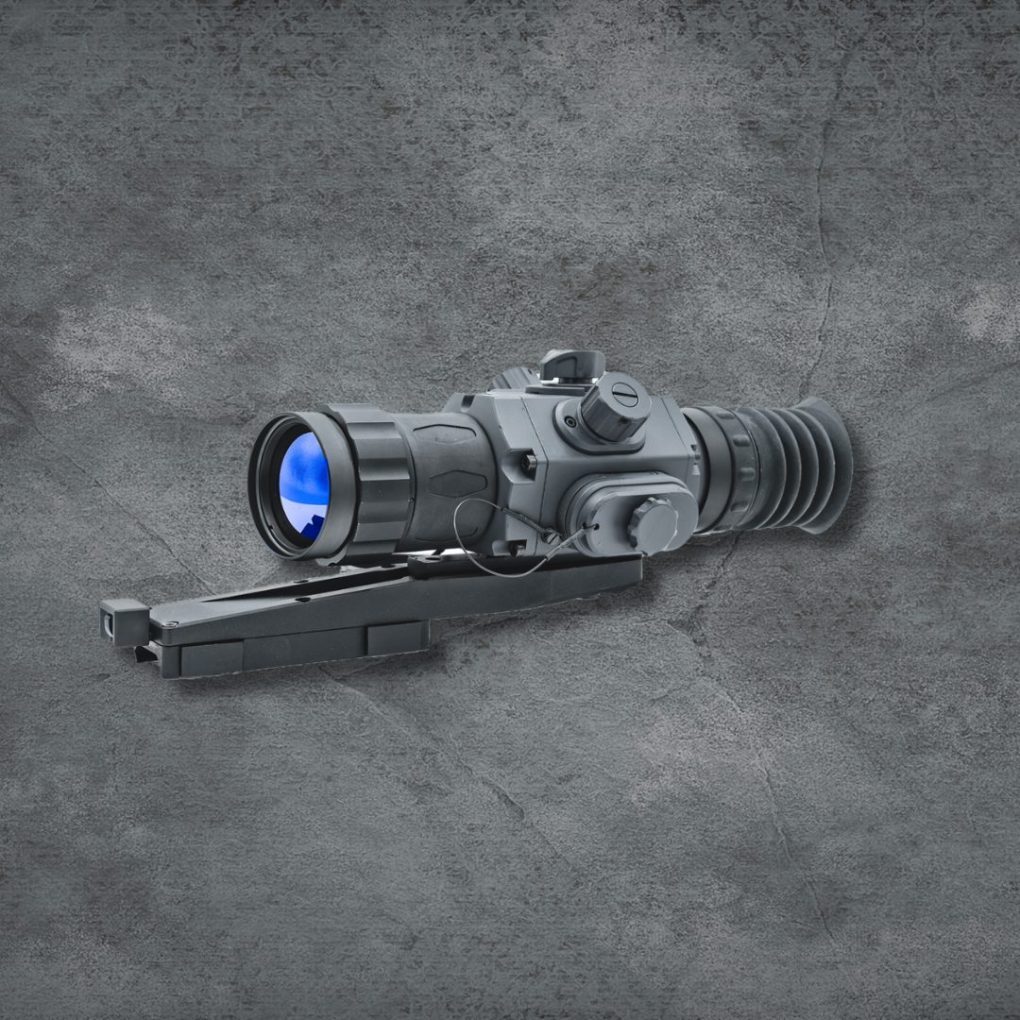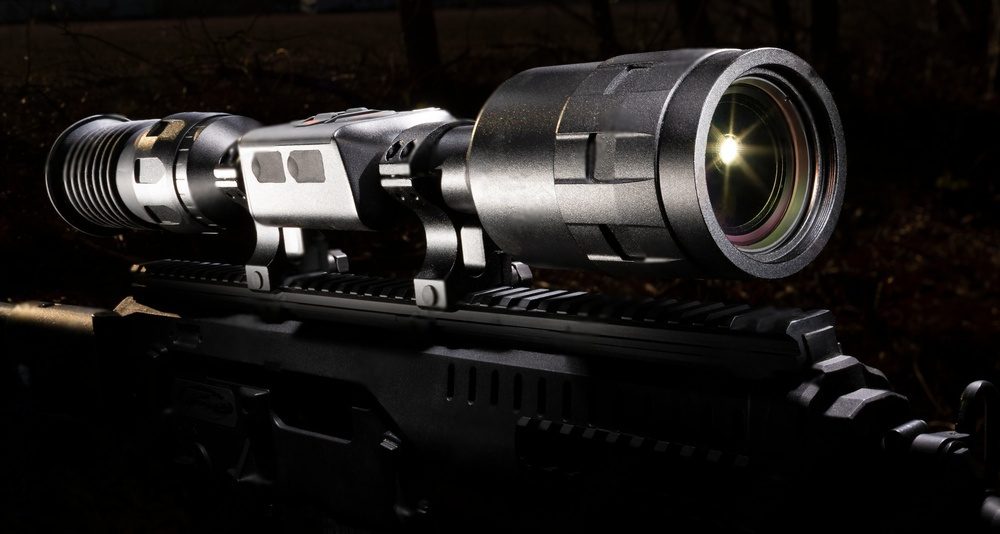As you stand at the precipice of modern hunting technology, it’s essential to grasp the ropes before swinging into the complex world of infrared rifle scopes.
You’re eyeing a tool that could elevate your nighttime hunting expeditions, but it’s not as simple as picking the shiniest gadget on the shelf.
Consider the compatibility between the scope and your rifle—will they work in tandem like a well-rehearsed orchestra, or will they clash like discordant cymbals?
You’ll also need to weigh battery performance against your typical hunting duration; after all, you don’t want your scope to fizzle out when you’re in the heat of the chase.
And let’s not forget the legal maze you’ll need to navigate; the rules surrounding the use of infrared technology vary by jurisdiction and could change the game entirely.
As for cost, remember that the bitterness of poor quality lingers far longer than the sweetness of a low price tag.
Stay with me, and we’ll unpack these considerations layer by layer, equipping you with the knowledge to strike the perfect balance for your nocturnal targeting needs.
*Contact*
Call: (800) 674-7302
Mail: sales@steeleindinc.com
⇒ Before you start, take a look at our various articles that might interest you!
–L3Harris Vs. Elbit Systems: Here’s What to Know
–Need A Reliable Monocular? The SI/PVS-14 Gen 3 Is Here
–Night Vision Compatibility with Red Dot Sights
–Night Vision FAQs: What You Need to Know
–AND more visit our blog!!
Key Takeaways
- Infrared rifle scopes capture images by detecting thermal radiation emitted by objects.
- Scope-to-rifle compatibility depends on factors like rail type, mounting space, and recoil rating.
- Battery performance is crucial and factors to consider include power consumption, battery type, and weather-sealing.
- Legal considerations vary by jurisdiction and intended use, so it’s important to be aware of ownership and use regulations.
Understanding Infrared Technology
Before investing in an infrared rifle scope, it’s essential to grasp how this technology captures images by detecting thermal radiation emitted by objects, often invisible to the naked eye. Infrared scopes operate on the principle that all objects emit a certain level of heat energy. This heat energy, part of the electromagnetic spectrum, is detected as infrared light.
Your scope’s sensor, typically a microbolometer, reads the infrared energy levels and translates them into an electronic image. This microbolometer consists of an array of pixels; each pixel reacts to infrared radiation by changing resistance. This resistance change is converted into an electrical signal, which is processed to create a visual representation of the thermal scene.
Understanding the wavelength measured by the scope is crucial. Infrared light spans from about 700 nanometers to 1 millimeter. However, most scopes are sensitive to the 7 to 14-micrometer range, the typical wavelengths emitted by animals and humans.
The resolution of the sensor is vital, too. Higher resolution provides a crisper image, but it also means a higher price tag. Don’t overlook the refresh rate, expressed in hertz (Hz), which determines how smoothly the image updates – crucial for tracking moving targets.
Scope-to-Rifle Compatibility
Having understood the infrared technology behind these scopes, it’s crucial to ensure that the model you choose is compatible with your rifle’s make and mounting system. Compatibility hinges on several factors, including rail type, mounting space, and recoil rating.
Firstly, check your rifle’s rail type. Most modern firearms are equipped with a Picatinny or Weaver rail, but infrared scopes may require a specific kind or size. Ensure the scope’s base matches your rifle’s rail design; otherwise, you’ll need an adapter, which could affect stability and accuracy.
Secondly, assess the mounting space. Infrared scopes tend to be larger and heavier than traditional scopes. Verify that there’s ample room on the rail to accommodate the scope without impeding any other rifle functions or accessories. You’ll also need to consider eye relief—the distance from the rear lens your eye requires to see a full image without strain. Infrared scopes sometimes offer less eye relief, so a proper fit is essential to avoid injury from recoil.
Lastly, consider the recoil rating. Every scope has a maximum recoil threshold it can withstand. Match the scope’s rating to your rifle’s caliber and recoil intensity to avoid damage to the optics during firing. Disregarding this could lead to misalignment or internal damage, compromising both the scope’s function and your shooting accuracy.
Evaluating Battery Performance
How long can you expect your infrared rifle scope’s battery to last during a hunting trip or tactical operation? Battery performance is crucial, and you’ll find that most modern infrared scopes run on either CR123A, AA, or proprietary rechargeable batteries. Manufacturers typically specify battery life, but it’s essential to understand that actual performance can vary based on usage intensity, features utilized, and ambient temperature.
When evaluating battery performance, consider the scope’s power consumption in both active and standby modes. High-resolution displays and additional features like wireless connectivity can drain batteries faster. Look for models with power-saving modes or auto-shutdown features to extend battery life.
Battery type affects not just longevity but also availability and cost of replacements. CR123A batteries often provide superior performance in colder climates, while AA batteries are more readily available. Rechargeable batteries save on long-term costs but may not offer the same runtime per charge as disposables.
Always verify if the battery compartment is weather-sealed to prevent moisture ingress, which could affect performance. Lastly, it’s wise to carry spare batteries, especially if you plan to be in the field for extended periods. Accurate knowledge of your scope’s battery performance ensures you’re never left in the dark at critical moments.
Legal Considerations
While ensuring your infrared rifle scope is powered for the duration of your venture is critical, it’s equally important to recognize the legal constraints that govern the use of such technology. Infrared scopes have specific legalities that vary widely by jurisdiction and intended use, such as hunting or tactical applications. You must be acutely aware of local, state, and federal regulations.
Here’s a quick reference table highlighting key legal considerations:
| Jurisdiction | Consideration |
| Federal | Ownership and use may be regulated by laws like the National Firearms Act (NFA). |
| State | Some states restrict use during certain hunting seasons or hours. |
| International | Exporting infrared scopes may require compliance with ITAR regulations. |
Before making a purchase, verify if the infrared scope is classified as a “dual-use” item under the Export Administration Regulations (EAR) or as a defense article under the International Traffic in Arms Regulations (ITAR). Noncompliance with these regulations can lead to significant fines or imprisonment. Additionally, check if there are any restrictions on the importation of such devices into your country.
Price Versus Quality
When evaluating infrared rifle scopes, it’s essential to balance cost with the quality and features that meet your specific needs. You’ll encounter a broad price spectrum, with entry-level models starting at a few hundred dollars, stretching into the thousands for top-tier military-grade scopes. Don’t let sticker shock deter you; remember, you’re investing in technology that can significantly enhance your nighttime shooting accuracy.
Higher-priced scopes typically boast superior image resolution, longer battery life, and more robust construction. These models often feature advanced sensor technology, such as a 640×480 thermal detector, which provides crisp images even at greater distances. They may also offer finer reticle adjustments, crucial for long-range precision.
Conversely, budget-friendly options might’ve lower resolution sensors, such as 320×240, resulting in less clarity and detail. Construction may be less durable, and battery life might be shorter, necessitating frequent replacements or recharges.
It’s not just about the upfront cost. Consider the scope’s longevity, reliability in various conditions, and potential need for repairs. A mid-range model could be the sweet spot, offering a balance of quality and affordability. Prioritize the features that are non-negotiable for you and assess which scopes provide those at the best price. Quality should never be compromised, but neither should you overpay for unnecessary extras.
Scopes offered by Steele Industries

Description:
The iRay RICO G LRF is a sophisticated thermal imaging rifle scope designed for precision targeting and ranging in various lighting conditions. With an integrated laser rangefinder (LRF), this high-performance scope offers users the ability to accurately measure distances up to 1000 meters, enhancing shot precision. The RICO G LRF boasts a crisp 640×512 thermal detector with a 50Hz refresh rate, ensuring clear imagery and smooth tracking of moving targets. Its rugged construction is weather-resistant, making it suitable for all-terrain use. The scope also features multiple reticle options, image capture capabilities, Wi-Fi streaming, and a user-friendly interface. This state-of-the-art thermal scope is ideal for hunters and tactical shooters seeking a reliable edge in the field.
- IRAY USA BRAVO 384 3X-12X35 THERMAL RIFLE SCOPE

Description:
The iRay RICO Bravo 384 Scope is a robust thermal imaging device engineered to elevate the hunting and tactical shooting experience. It offers a 384×288 infrared resolution that enables users to detect heat signatures in complete darkness or through obstacles like smoke and foliage. With a built-in OLED display and a 50Hz refresh rate, the scope delivers crisp, real-time imagery for fast-moving targets, paired with advanced image processing for superior clarity and detail. The RICO Bravo includes a wide array of features such as multiple reticle patterns, a picture-in-picture function, and digital zoom, allowing for precise shot placement. Its durable construction and intuitive controls make it a user-friendly option for those seeking to enhance their nighttime shooting capabilities.
- Contractor 640 TWS 3-12x

Description:
The Contractor 640 TWS 3-12x is a high-end thermal weapon sight designed for demanding environments and critical applications. Equipped with a powerful 640×512 thermal sensor, this scope provides exceptional image clarity and detail over various distances, with a zoom range of 3-12x that allows for both broad surveillance and precise targeting. Built to withstand the rigors of tactical use, it features a rugged housing that is both water-resistant and shockproof. The Contractor 640 TWS also comes with an array of advanced functionalities including multiple color palettes for better target contrast, reticle patterns for accuracy, and video output capabilities for recording. This thermal sight is ideal for professional contractors and law enforcement personnel who require reliable performance in low-light and no-light conditions.
Frequently Asked Questions
How Does an Infrared Rifle Scope Perform in Various Weather Conditions, Such as Fog, Rain, or Snow?
Infrared scopes can struggle in fog or rain, as moisture absorbs infrared light. Snow’s reflectivity may cause glare. You’ll need a scope with good weather-resistant features for consistent performance in such conditions.
Can Using an Infrared Rifle Scope Interfere With or Be Affected by Other Electronic Devices in the Immediate Vicinity?
Yes, using an infrared rifle scope can be affected by nearby electronic devices due to electromagnetic interference, which may cause image distortion or operational malfunctions, so you’ll want to minimize this risk.
What Is the Learning Curve for Someone Who Has Never Used an Infrared Scope Before, and Are There Any Recommended Training Practices to Become Proficient?
You’ll face a steep learning curve with your first infrared scope. To get proficient, practice at varying distances and lighting, and familiarize yourself with its features through consistent, hands-on training sessions.
Are There Any Special Maintenance or Care Instructions for Infrared Rifle Scopes to Ensure They Last Longer and Perform Optimally?
You’ll need to regularly clean the lenses and check battery connections to maintain your infrared scope. Store it in a cool, dry place to prevent condensation that can damage the internal components.
How Does the Use of an Infrared Rifle Scope Affect the Natural Behavior of Wildlife, and Are There Any Ethical Considerations to Keep in Mind When Using This Technology for Hunting?
You must consider how infrared scopes can alter animal behavior, potentially stressing wildlife. Ethically, ensure you’re hunting responsibly and not exploiting the technology to cause undue harm or disturbance to natural habitats.
Conclusion
In conclusion, when it comes to snagging an infrared rifle scope, there are several factors to consider. First and foremost, it is important to weigh your options and choose a scope that will best suit your needs. This includes ensuring that the scope is compatible with your rifle and that it will not hinder your shooting experience.
Additionally, it is crucial to consider the battery life of the scope. Imagine being in a critical moment and having the battery die on you. To prevent this, it is important to choose a scope with a reliable and long-lasting battery.
Furthermore, it is essential to stay informed about the legal requirements and regulations regarding the use of infrared rifle scopes. This will help you avoid any legal issues or hiccups that may arise.
Lastly, while it may be tempting to skimp on quality to save a few bucks, it is important to remember that this can have a negative impact on accuracy and durability. Investing wisely in a quality scope will ensure that it does not let you down when it matters most.
In conclusion, taking the time to carefully consider these factors and make an informed decision will help you choose a reliable and effective infrared rifle scope that meets your needs and enhances your shooting experience.


